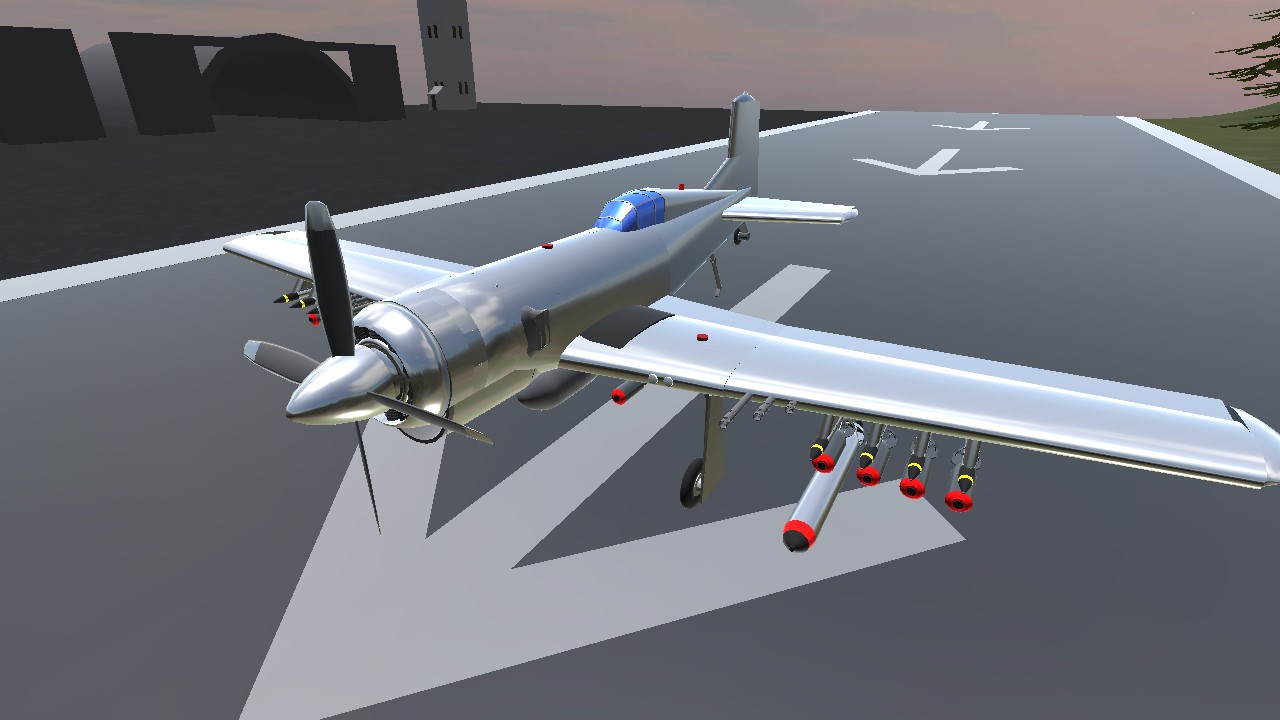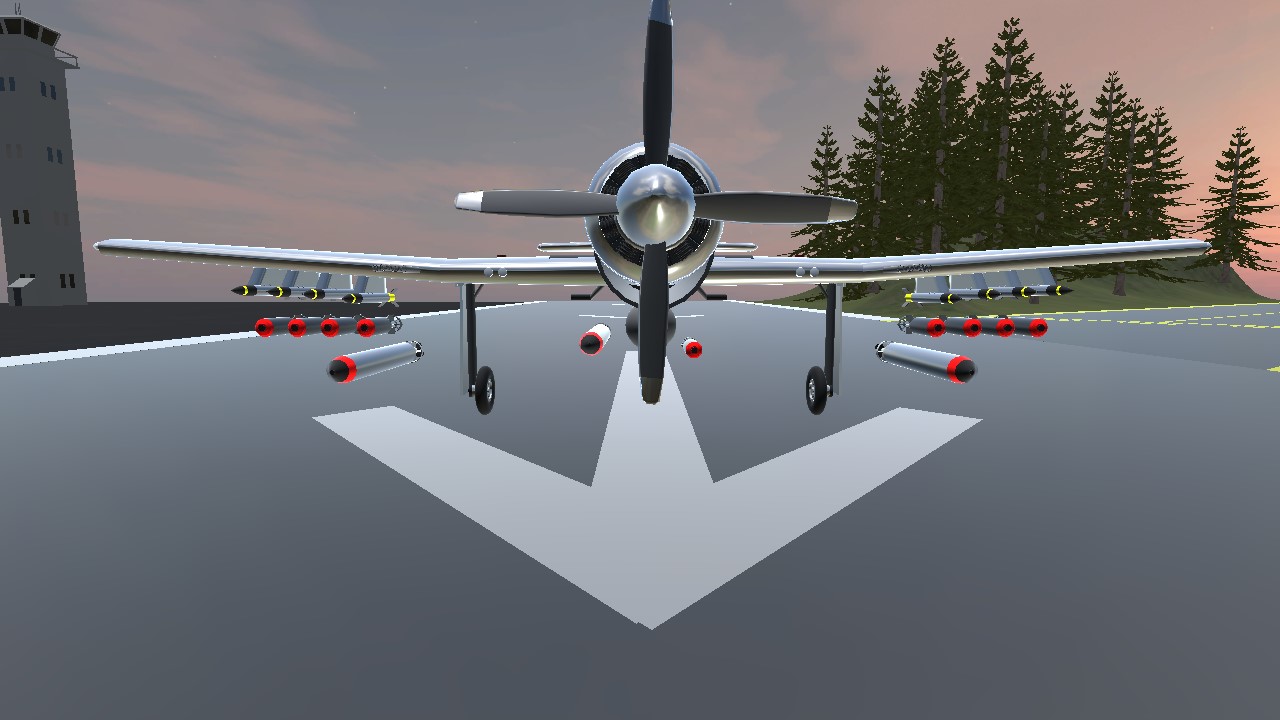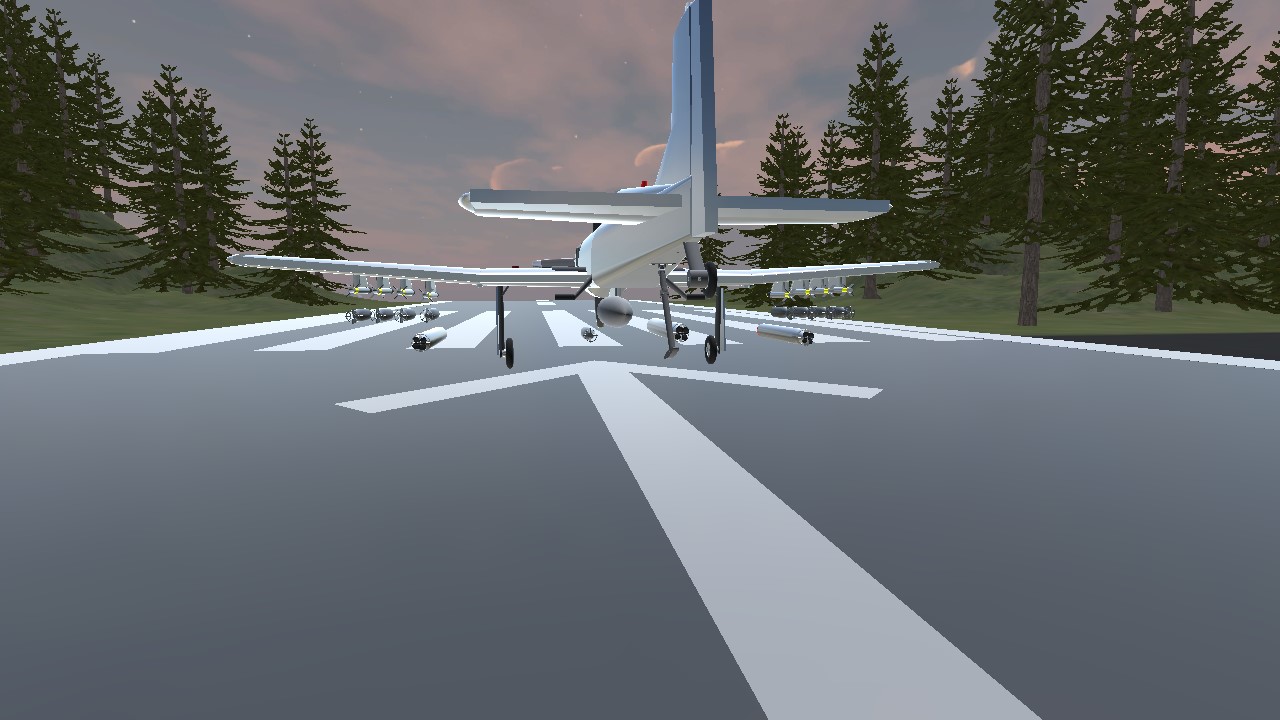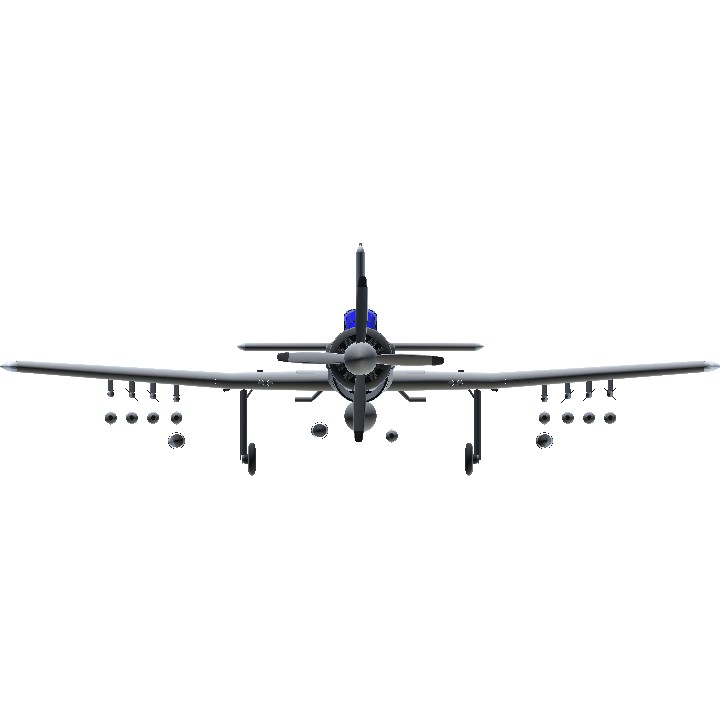P6B Merlin, first flown in late 1941.
The P6B was basically a P6A with a new 4-bladed prop and a new prop hub that is more aerodynamic. Just minor performance increases. During this time peroid the PAF was already studying designs that are powerful, stable, manueverable, fast, and hard hitting, primarily to replace the P6A and P6B. However these studies didn't produce a new aircraft, but rather implemented major improvements on the P6 airframe in the form of the P6C "Super Merlin". During this time a heavy fighter/interceptor, night fighter, air force-akin fighter, and a new heavy bomber were in development. At this time the Kraken Project was also started, but building of the new mysterious "kraken" wouldn't commence until 1945.
HOW TO PERFORM A "CARRIER LANDING":
Drop flaps to full, press G to extend the landing gear, which also drops the tailhook, and keep prop pitch at max for max power. It's a good idea to keep WEP on standby by pressing AG-1 incase of a go-around. Keep your speed high on approach (between 130-115 MPH), don't fly too low, or too high, and right before touching down, reduce power, pull the stick aft all the way back, and at the same time press either AG-3, 4 or 5 to activ vate the drag chutes (as if you caught a wire in the trapping). If you landed safely, immediately discard the parachute by deactivating which ever parachute activation group you selected (either 3, 4 or 5.). Really hard to nail, but it's the closest I could get to simulating a real carrier trapping.
Enjoy and happy flying!
G = Landing Gear/Tailhook
AG-1+MAX THROTTLE = WEP (War Emergency Power)
AG-2 = Drop Center External Fuel Tank (If Equipped)
AG-3 = First Parachute set for carrier landings
AG-4 = Second Parachute set for carrier landings
AG-5 = Third Parachute set for carrier landings
AG-6+TRIM UP = Fold Wings, vise versa to unfold.
AG-7 = Landing Lights
AG-8 = Nav, Beacon, Strobe Lights
VTOL Slider = Constant Speed Prop
Trim Slider = Flaps (Trim Slider Down for Extending Flaps, Vice Versa for retracting Flaps)
Specifications
General Characteristics
- Predecessor PAC P6A Merlin -Foldable Wings & Working WEP!
- Created On Windows
- Wingspan 36.2ft (11.0m)
- Length 27.1ft (8.3m)
- Height 11.6ft (3.5m)
- Empty Weight 4,339lbs (1,968kg)
- Loaded Weight 7,407lbs (3,359kg)
Performance
- Power/Weight Ratio 3.64
- Horse Power/Weight Ratio 0.378
- Wing Loading 35.9lbs/ft2 (175.5kg/m2)
- Wing Area 206.1ft2 (19.1m2)
- Drag Points 4781
Parts
- Number of Parts 108
- Control Surfaces 9
- Performance Cost 875







@Texasfam04
Thank you and happy new year!
@Empanadinho
Thanks!
Incrível mano
Only minor engine tweaks, a pretty boring variant.